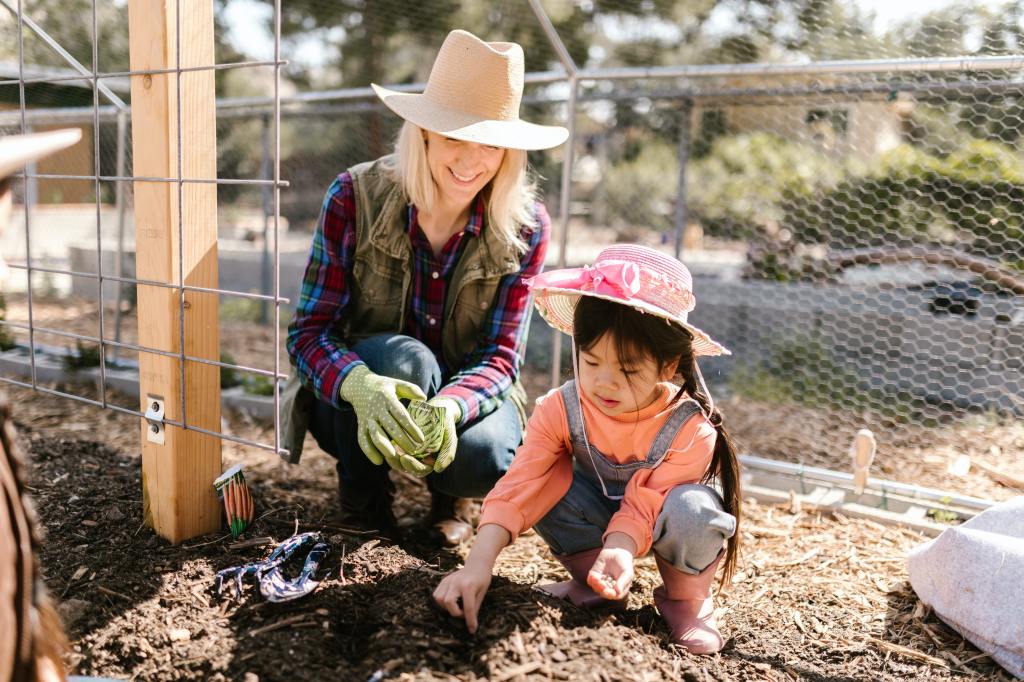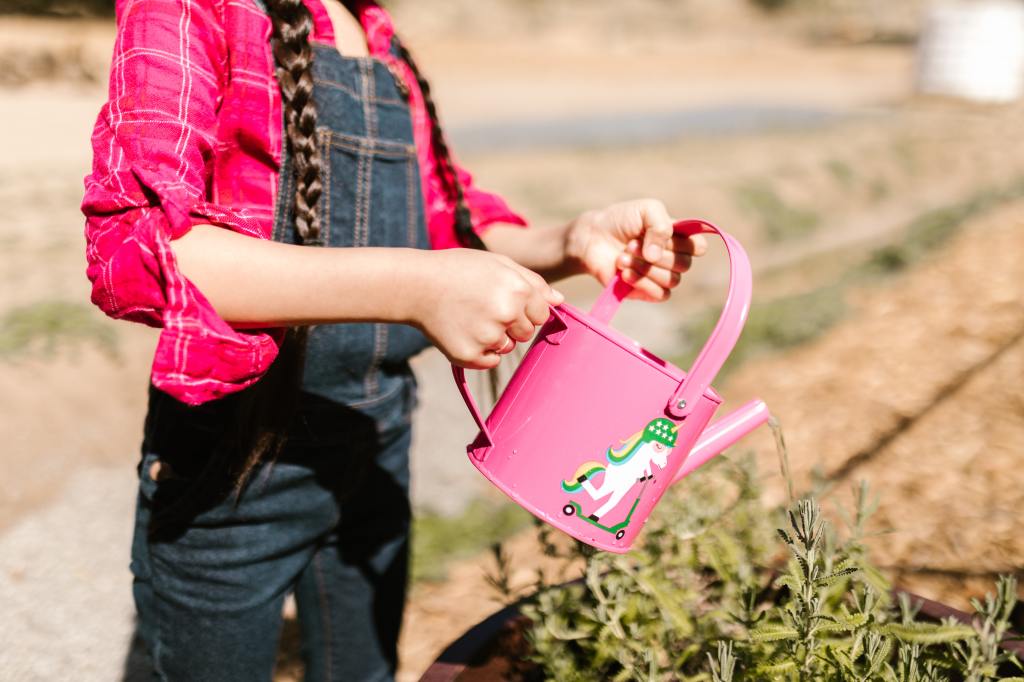
Introduction to School Gardens
As you all know I love to include my children in my outdoor adventures, AKA gardening 🙂 They may not always appreciate the ‘work’ they have to do right now, but I truly believe they are learning invaluable lessons in life.
School gardens have become increasingly popular in recent years as educators and parents recognize their numerous benefits for students. These gardens provide a unique opportunity for children to connect with nature, learn about the environment, and develop valuable life skills. In todays blog post, I’ll explore the advantages of school gardens and discuss how you can foster one in your child’s educational journey.
Benefits of School Gardens for Students
Academic Advantages of School Gardens

Join the list
Join hundreds of our subscribers and be the first to know about new content and special offers.
One of the key advantages of school gardens is their ability to enhance academic learning. By engaging in hands-on activities in the garden, students can apply their knowledge from various subjects like science, math, and even language arts. For example, in science, they can learn about plant growth, photosynthesis, and the ecosystem. In math, they can measure and analyze data related to plant growth and yield. Furthermore, school gardens provide a practical context for learning, making it more interesting and memorable for students.

School gardens also promote critical thinking and problem-solving skills. When faced with challenges such as pests or plant diseases, students must analyze the situation, research possible solutions, and implement them. This process encourages creativity and cultivates a sense of responsibility and ownership over their learning.
Health and Wellness Benefits of School Gardens
In addition to academic advantages, school gardens contribute to the overall health and wellness of students. By actively participating in gardening activities, children engage in physical exercise, improving their fitness levels and promoting a healthy lifestyle. Furthermore, school gardens provide an opportunity for children to learn about nutrition and develop healthy eating habits. When students grow their own fruits and vegetables, they are more likely to try them and develop a preference for fresh, nutritious foods.

School gardens also have psychological benefits. Spending time in nature has been shown to reduce stress, improve mental well-being, and enhance focus and concentration. The peaceful and serene environment of a garden provides a welcome respite from the demands of a busy academic schedule, allowing students to recharge and rejuvenate.
Environmental Benefits of School Gardens
In today’s world, teaching children about environmental sustainability is crucial, and school gardens offer an excellent platform to do so. By participating in gardening activities, students gain a deeper understanding of the natural world and the importance of protecting it. They learn about the interdependence of living organisms, the significance of biodiversity, and the impact of human actions on the environment.

School gardens also promote environmental stewardship. Students learn about sustainable gardening practices such as composting, rainwater harvesting, and organic pest control methods. By implementing these practices, they become active contributors to the preservation of the environment and develop a sense of responsibility towards the planet.
How to Start a School Garden
Starting a school garden may seem like a daunting task, but with careful planning and community involvement, it can be a rewarding endeavor. Here are some steps to help you get started:
- Gather support: Share your vision for a school garden with teachers, parents, and school administrators. Explain the benefits and potential learning opportunities it offers. Create a team of dedicated individuals who are willing to contribute their time and resources.
- Assess the space: Identify an area within the school premises that is suitable for a garden. Consider factors such as sunlight exposure, soil quality, and accessibility. If your school does not have enough space, explore the possibility of container or vertical gardens.
- Develop a plan: Create a garden design that takes into account the available space, the needs of different grade levels, and the desired learning outcomes. Consider including areas for vegetable beds, flower gardens, and even a composting system.
- Secure funding: Determine the budget required for your school garden project. Look for grants, sponsorships, or fundraising opportunities to cover the costs of materials, tools, and plants. Involve the community in fundraising events to promote a sense of ownership and pride.
- Prepare the soil: Test the soil to determine its nutrient content and pH level. Amend the soil as necessary to create a healthy growing environment for plants. Involve students in the soil preparation process to teach them about soil health and the importance of organic matter.
- Select plants: Choose plants that are suitable for your region’s climate and growing conditions. Consider a mix of vegetables, herbs, and flowers to provide a diverse learning experience. Involve students in the plant selection process to encourage their ownership and engagement.
- Implement maintenance and care: Create a schedule for garden maintenance tasks such as watering, weeding, and pest control. Assign responsibilities to students, teachers, and volunteers to ensure the garden remains well-maintained throughout the year.
Steps to Foster a School Garden in Your Child’s Educational Journey
Now that you have a school garden in place, it’s important to ensure it becomes an integral part of your child’s educational journey. Here are some steps to foster a school garden in your child’s learning experience:

- Incorporate garden activities into the curriculum: Collaborate with teachers to integrate garden-related activities into various subjects. For example, students can write journal entries about their gardening experiences in language arts or conduct experiments related to plant growth in science. By connecting the garden to their academic studies, children will see its relevance and develop a deeper appreciation for it.
- Organize garden-related events: Plan special events or celebrations centered around the school garden. This could include harvest festivals, cooking classes using produce from the garden, or even art exhibitions featuring student-created artwork inspired by the garden. These events create excitement and a sense of pride among students, further motivating their involvement.
- Create a garden club: Establish a garden club or an after-school gardening program where students can come together to learn, share ideas, and work on garden projects. This creates a sense of community and camaraderie among students, fostering teamwork and leadership skills.
- Involve parents and the community: Encourage parents and community members to participate in garden-related activities. This could involve volunteering in the garden, organizing workshops or guest lectures, or providing resources and expertise. By involving the wider community, you create a network of support and ensure the sustainability of the school garden initiative.
Involving the Community in School Garden Initiatives
School gardens thrive when the community is actively involved. Here are some ways to engage the community in your school garden initiatives:

- Partner with local businesses: Reach out to local businesses, such as nurseries, garden centers, or landscaping companies, for support. They might be willing to donate plants, tools, or resources. In return, you can promote their business through signage or mentions in your school newsletters.
- Collaborate with community organizations: Connect with community organizations that support environmental causes or promote healthy eating. They may be interested in partnering with your school garden initiative and provide resources, grants, or educational programs.
- Host workshops and events: Organize workshops or events related to gardening, sustainability, or nutrition. Invite experts from the community to share their knowledge and experiences. This not only provides valuable learning opportunities for students but also helps establish connections with community members passionate about the same cause.
- Establish a mentorship program: Reach out to local gardeners, farmers, or horticulturists and invite them to mentor students in the garden. This mentorship program allows students to learn from experienced individuals and provides inspiration for their future endeavors.
Resources and Organizations Supporting School Gardens
Several resources and organizations are available to support school gardens. Here are a few worth exploring:
- National Farm to School Network: This organization provides resources, grants, and technical support to schools interested in promoting farm-to-school initiatives, including school gardens.
- Green Thumb Challenge: This initiative encourages schools to create and maintain gardens while offering resources, grants, and recognition for their efforts.
- KidsGardening: KidsGardening is a nonprofit organization that provides curriculum resources, grants, and gardening tips specifically designed for educators and parents interested in school gardening.
- USDA People’s Garden Initiative: The People’s Garden Initiative offers guidance, grants, and resources to schools interested in starting gardens that promote environmental stewardship and community involvement.

The Impact of School Gardens on Children’s Educational Journey
School gardens offer a multitude of advantages for students, ranging from academic to health and wellness benefits, as well as environmental awareness. By fostering a school garden in your child’s educational journey, you provide them with a unique and enriching learning experience. The hands-on activities, critical thinking, and connection to nature that school gardens provide contribute to the holistic development of children. So, seize the opportunity to start a school garden and witness the positive impact it has on your child’s educational journey.
CTA (Call to Action):
If you’re inspired by the benefits of school gardens and want to foster one in your child’s educational journey, start by gathering support from teachers, parents, and the school administration. Together, you can create a vibrant learning environment that nurtures a love for nature, promotes academic growth, and instills lifelong values. Let’s sow the seeds of success in our children’s lives through school gardens!
If you enjoyed this blog , please LIKE, Follow, Share & leave me a comment! I love your feedback!
If you aren’t following me on Facebook & Instagram, go on over & give a LIKE & Follow me for daily tips & tricks for your home & garden!
Remember to eat fresh, shop local, & have a happy day,
Jean
Copyright Policy
All text and images on this site are copyright of For Dragonflies And Me. Unless otherwise noted, you may not use this content
This post may contain affiliate links. If you choose to purchase through an affiliate link, I may receive a small commission at no additional cost to you. You can see my full disclaimer here.

